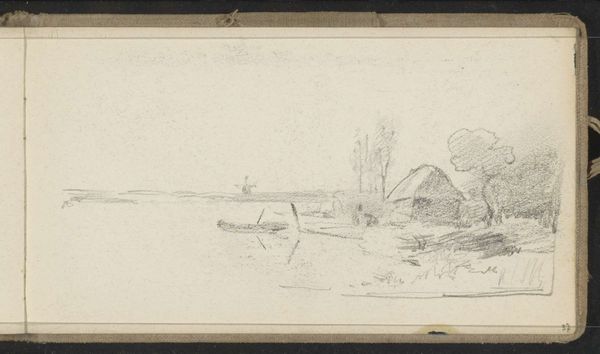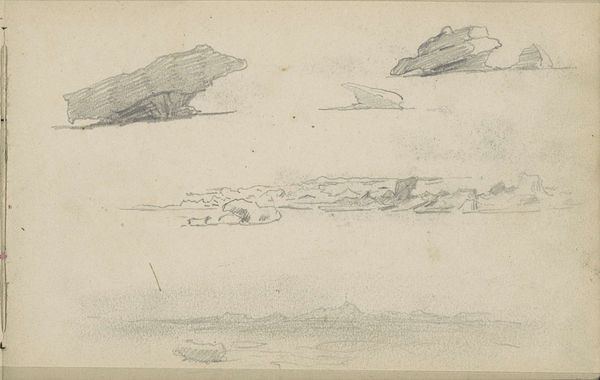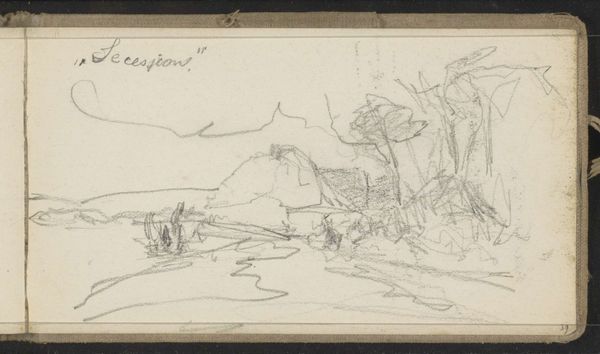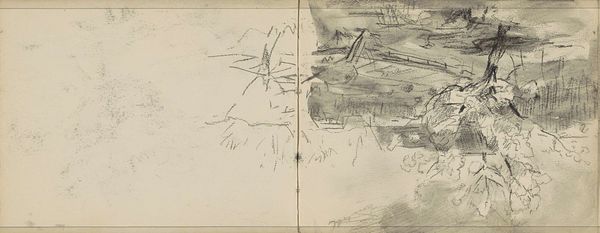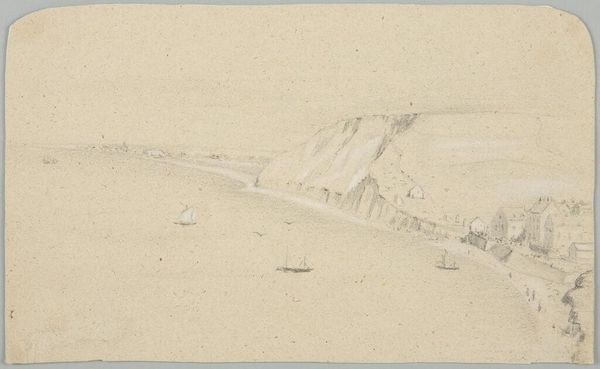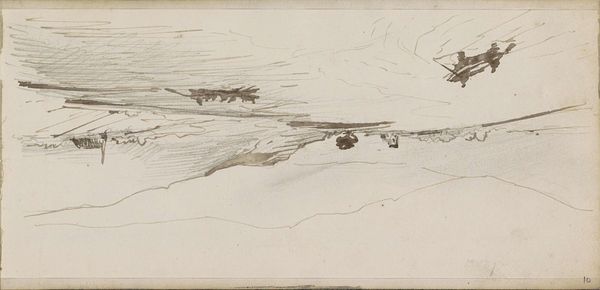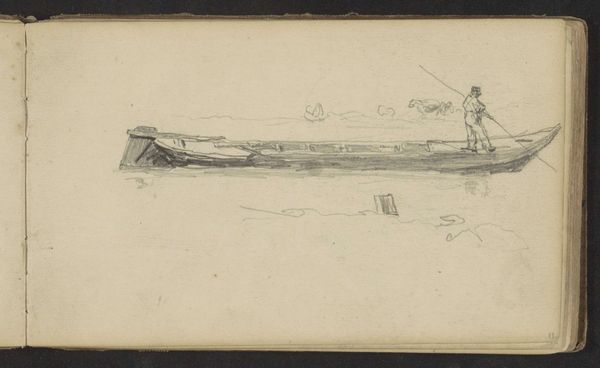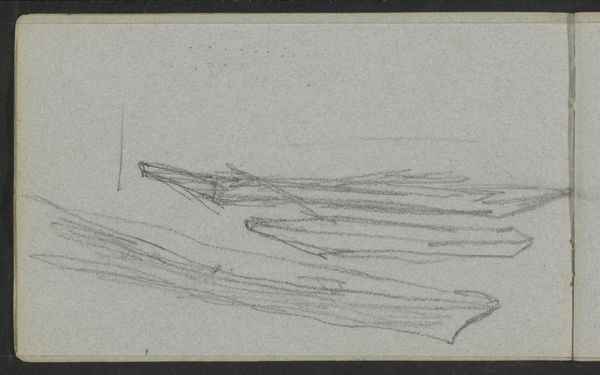
drawing, pencil
#
drawing
#
light pencil work
#
quirky sketch
#
sketch book
#
incomplete sketchy
#
landscape
#
personal sketchbook
#
sketchwork
#
ink drawing experimentation
#
pen-ink sketch
#
pencil
#
sketchbook drawing
#
genre-painting
#
sketchbook art
#
realism
Dimensions: height 104 mm, width 179 mm
Copyright: Rijks Museum: Open Domain
Editor: So, this drawing, “Landarbeiders in de Zaanstreek” by Willem Cornelis Rip from 1895, is rendered in pencil. It looks like a quick sketch, capturing figures amidst what seem to be logs or lumber. What do you see in this piece? Curator: I see a record of labor, yes, but more significantly, I am struck by the symbolic weight carried by these "land workers." Consider the Zaanstreek; in 1895, it was a site of burgeoning industry, where windmills were gradually giving way to steam power. Rip’s sketch captures workers seemingly caught between the traditional agrarian life, represented by the landscape, and this burgeoning, modern era implied by those timber logs—raw material fueling the future. Do you think it’s just about the workers in the field? Editor: I hadn't thought about it like that. So, the logs aren't just part of the scenery, but rather symbols? Like the changing times looming over the landscape. Curator: Exactly! Look at the almost ethereal rendering. The sketchy quality lends a sense of transience. Are these workers rooted in the land or adrift within an evolving industrial identity? The ambiguity is compelling. The lack of detail almost turns them into symbols *of* labor, rather than portraits of actual people. What feelings does that evoke in you? Editor: It does feel more melancholic now. It's a depiction of a specific time, but the symbolism makes it relatable to any period of industrial change, with a sort of sense of loss for the past and maybe apprehension towards the future. Curator: Indeed! By seeing beyond the literal representation and delving into the symbols, we gain insight into the cultural anxieties and transformations of that era. Editor: Thanks, that's a great point – a simple sketch, loaded with such depth!
Comments
No comments
Be the first to comment and join the conversation on the ultimate creative platform.

